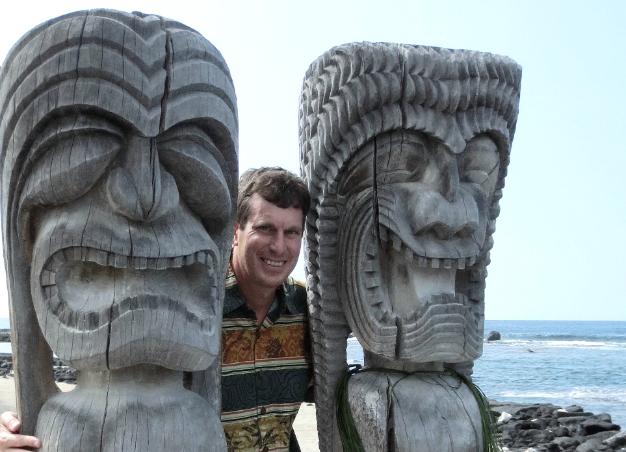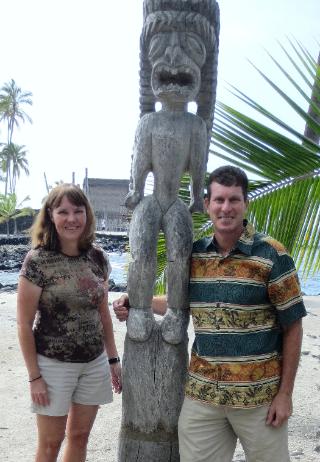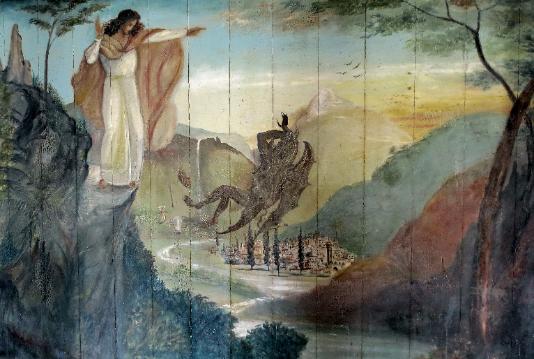
Where We Be
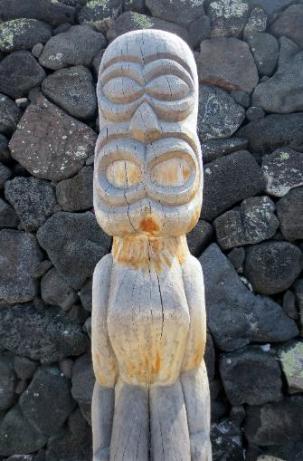
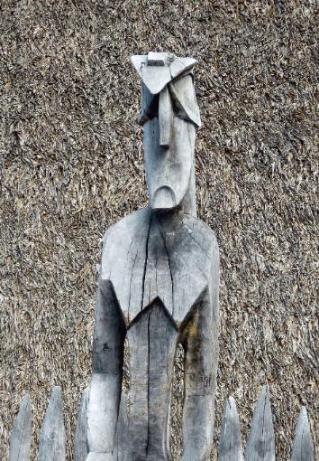
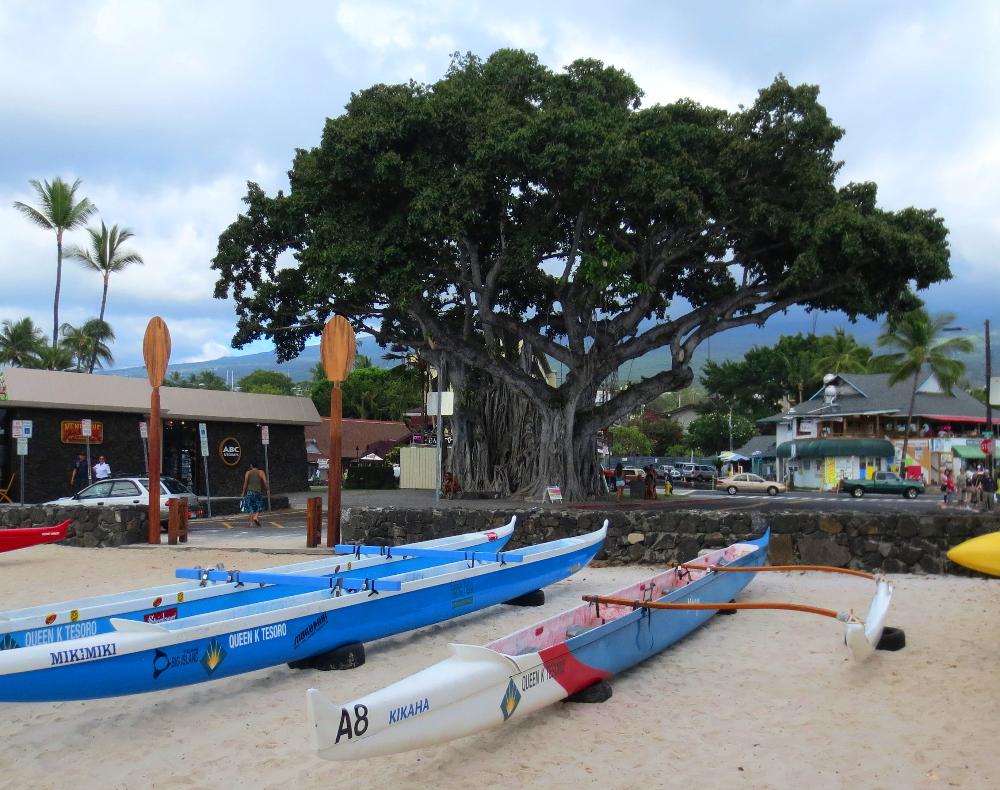
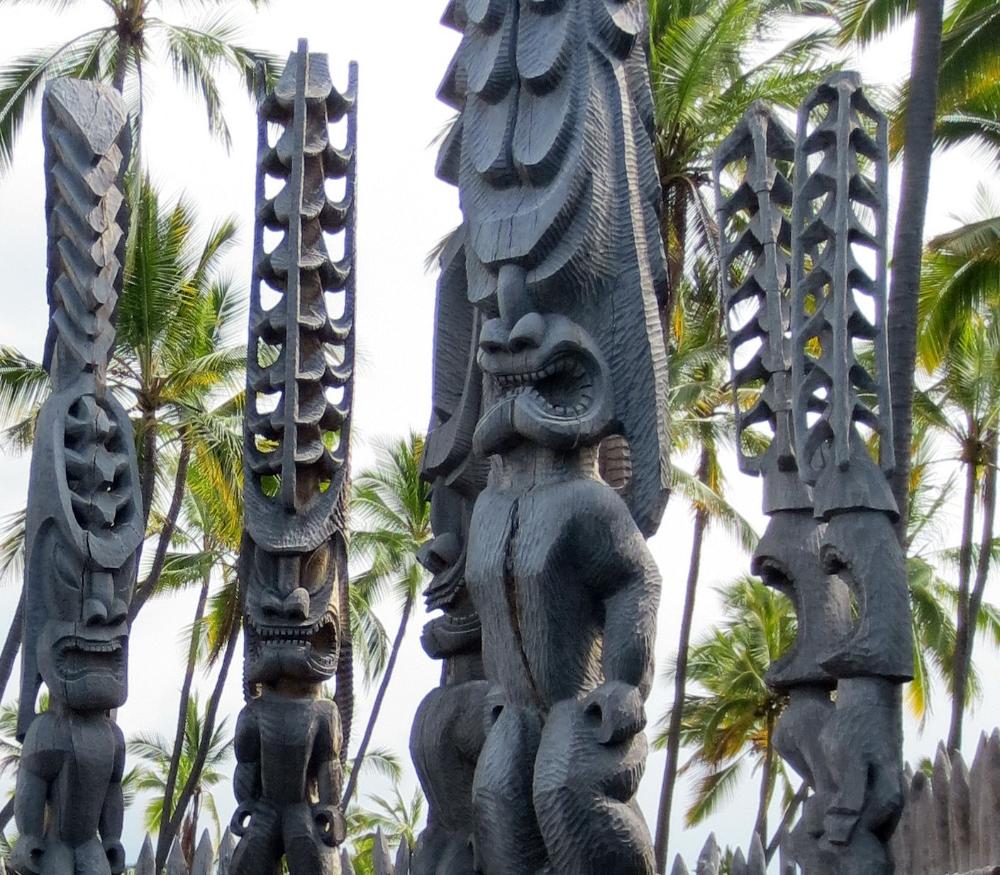
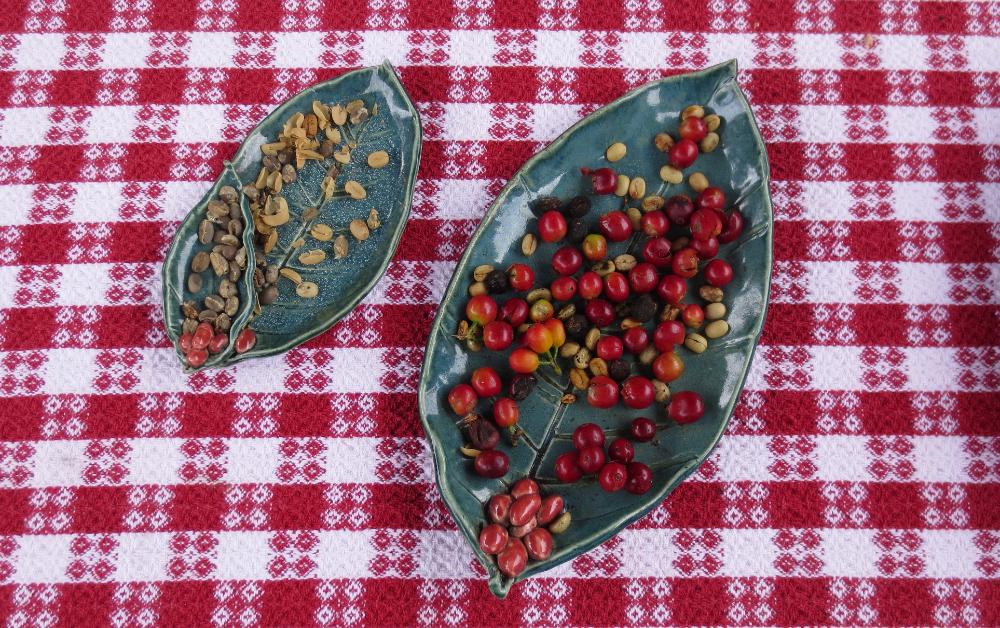
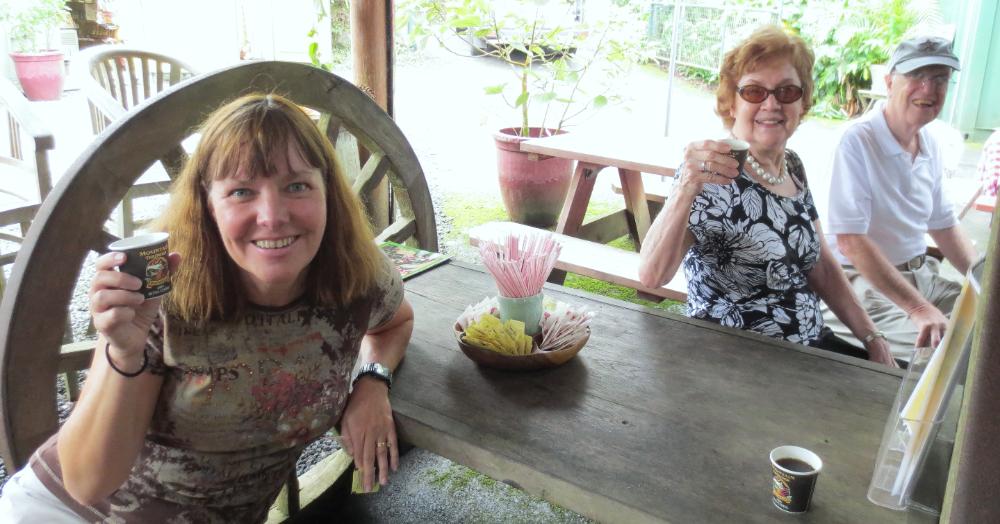
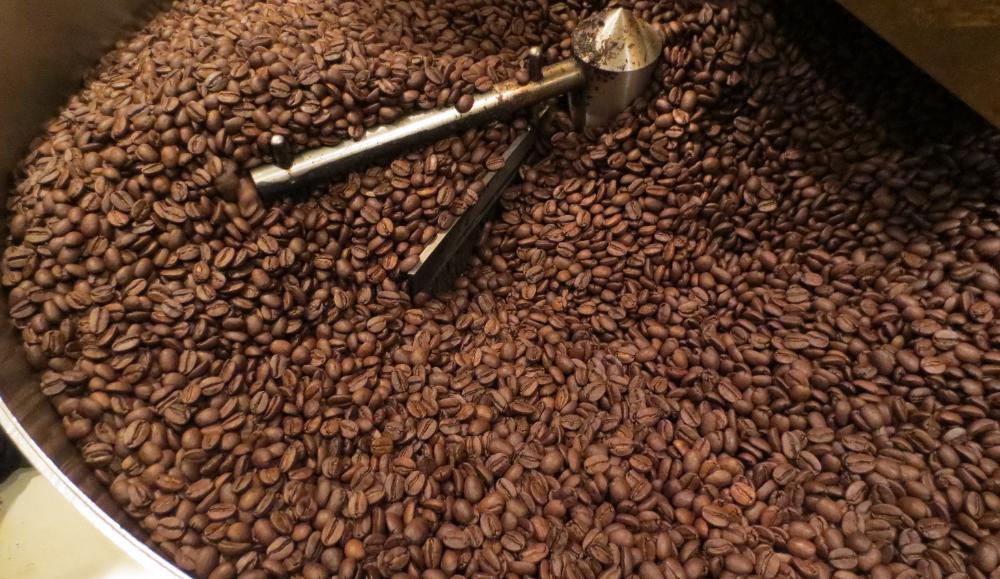
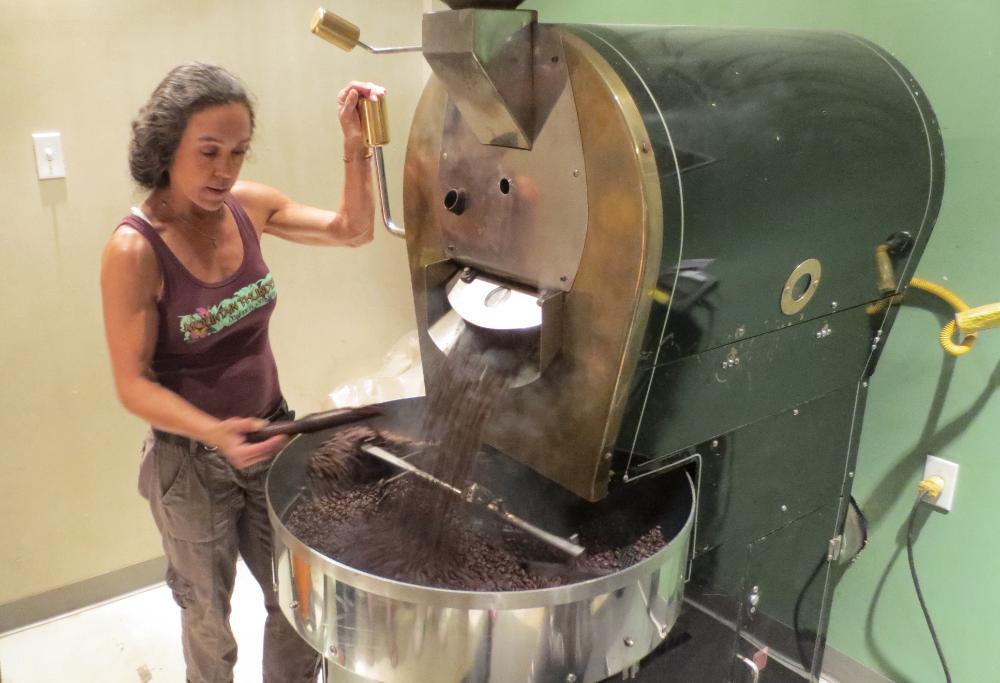
| We were encouraged to drink as many cups of delicious organic coffee as we could -- which was a lot! |
| The aroma of the dry-roasted Kona coffee beans was delightful |
| Here Judy shows us how the coffee beans are dry-roasted. We particularly liked hearing them pop like popcorn during this process. |
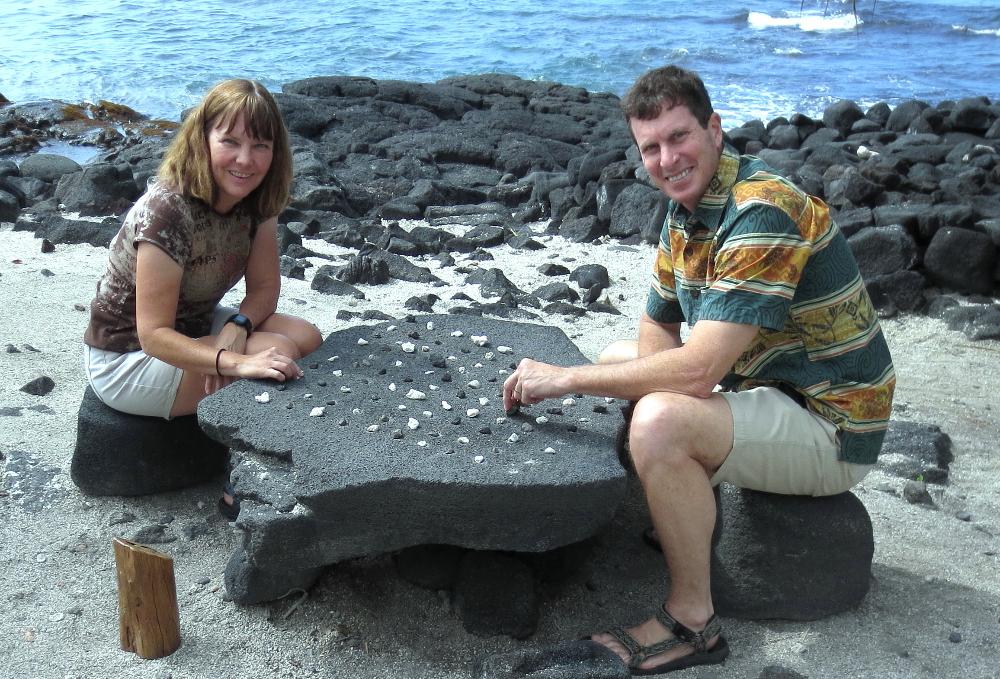
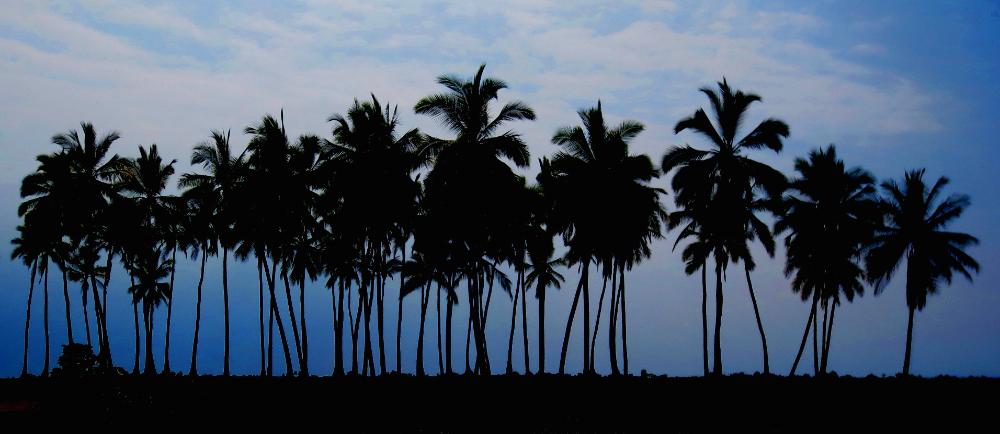
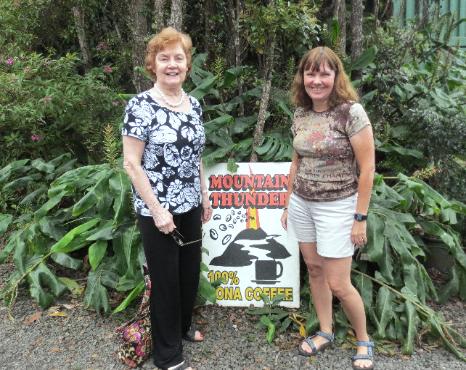
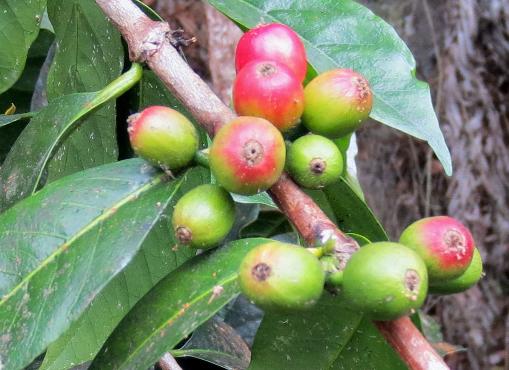
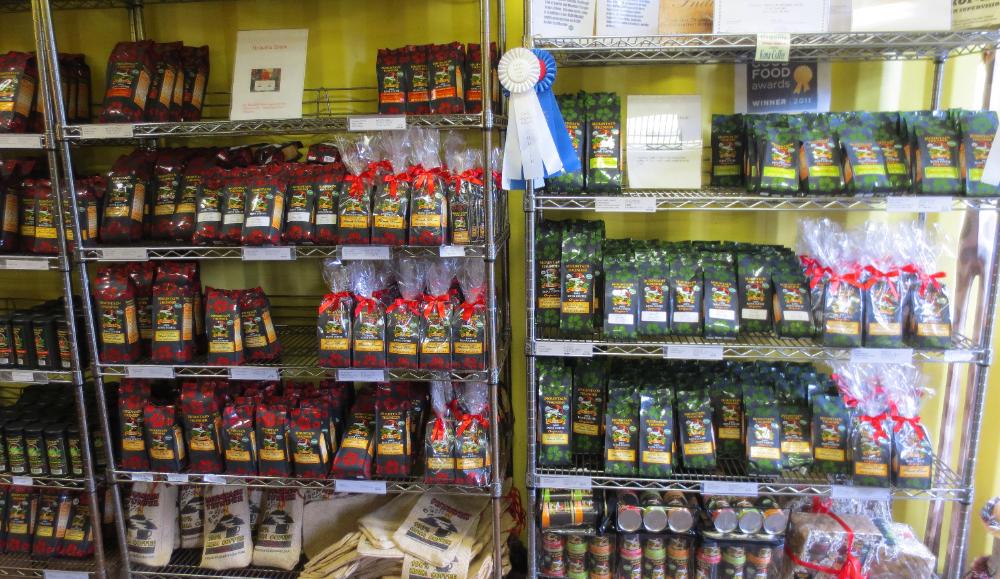
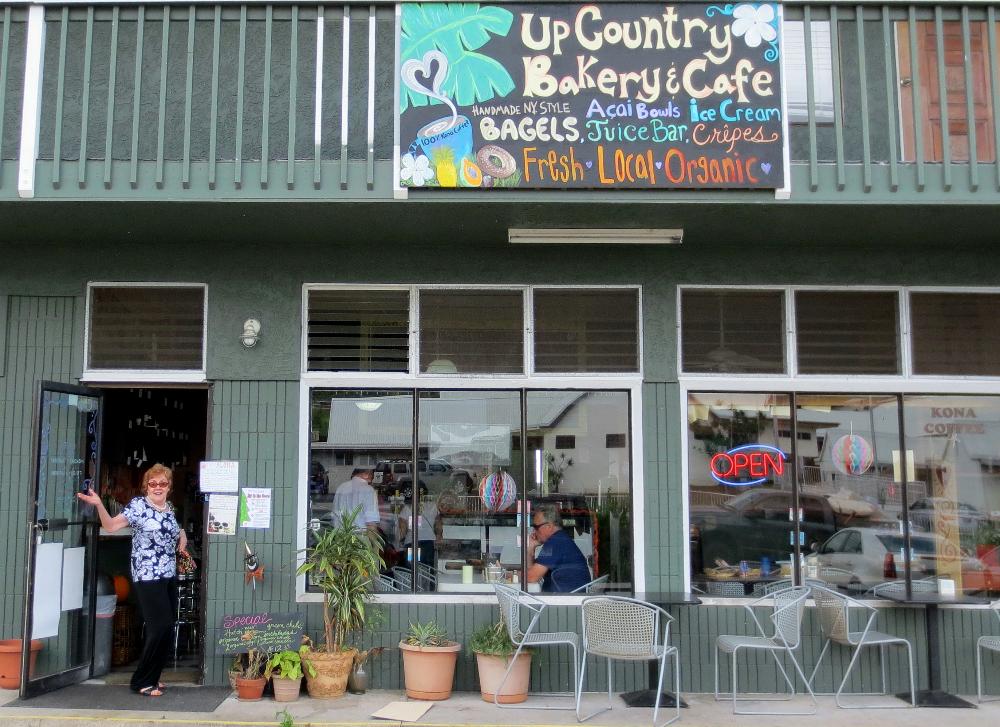
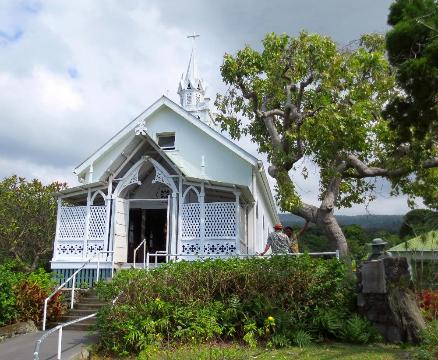
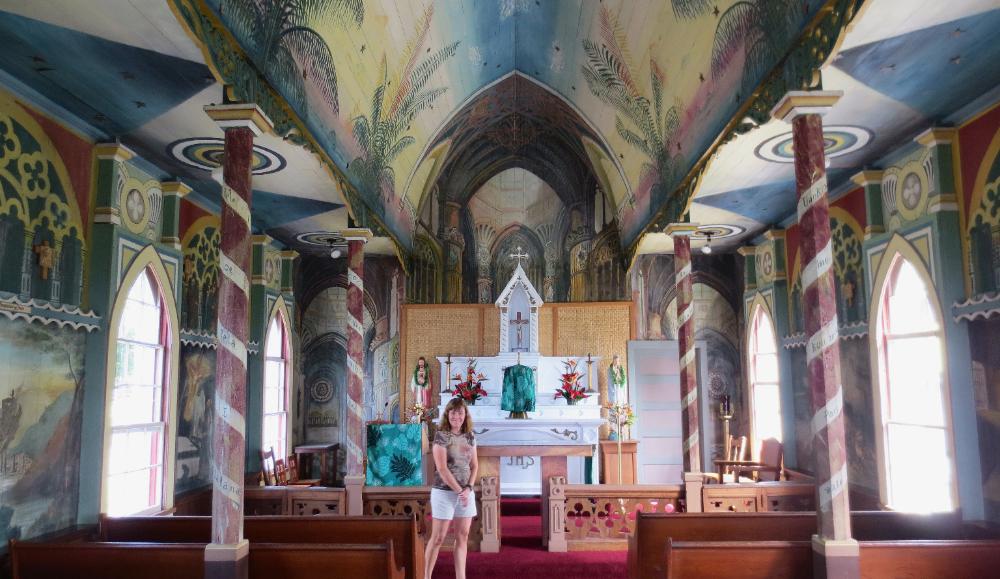
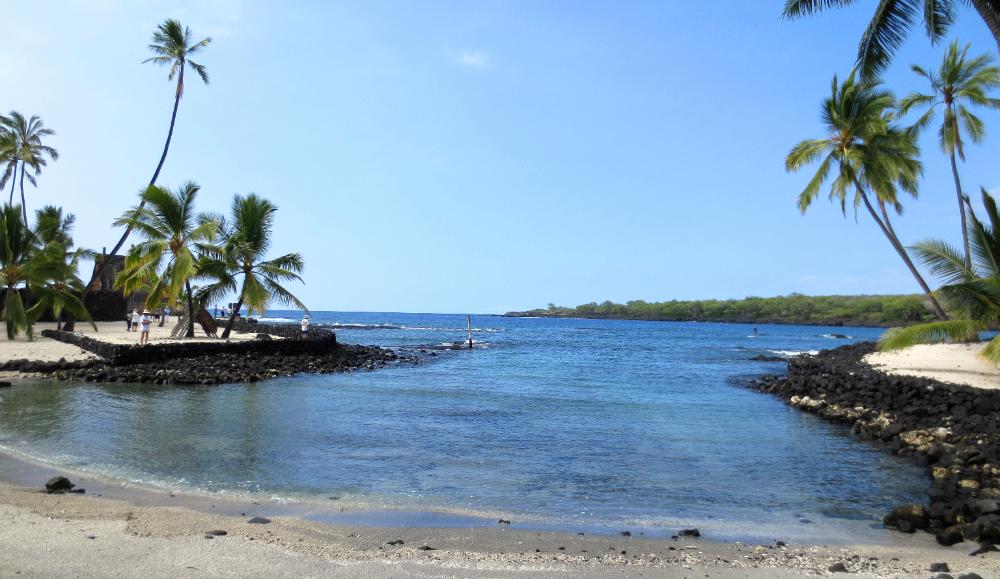
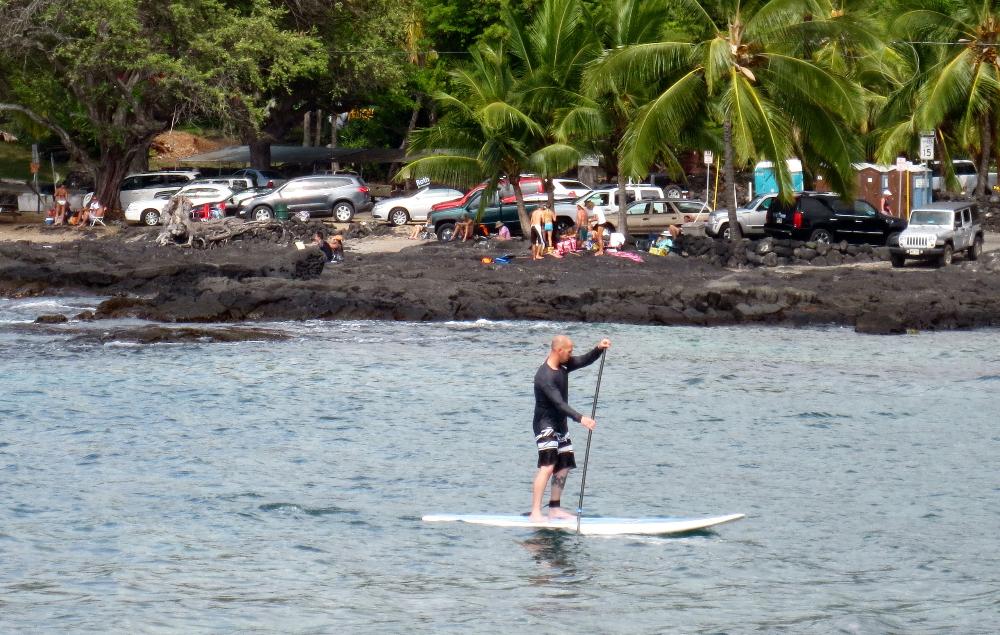
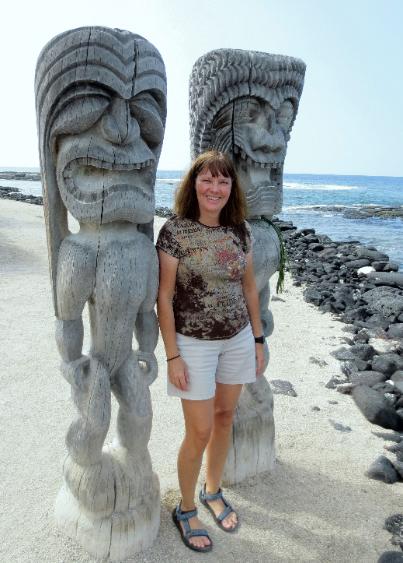
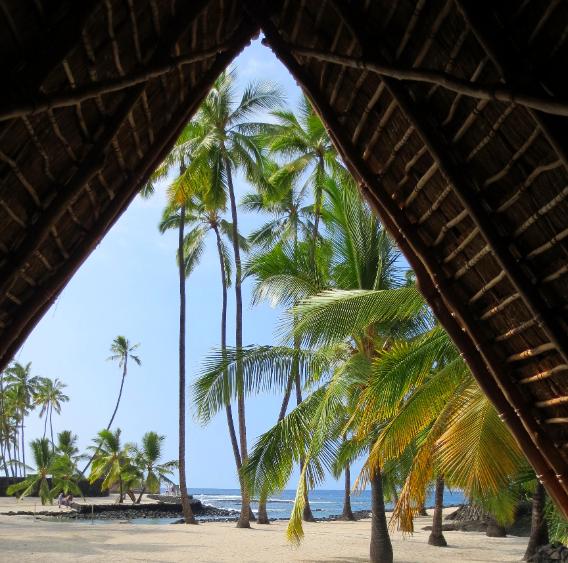
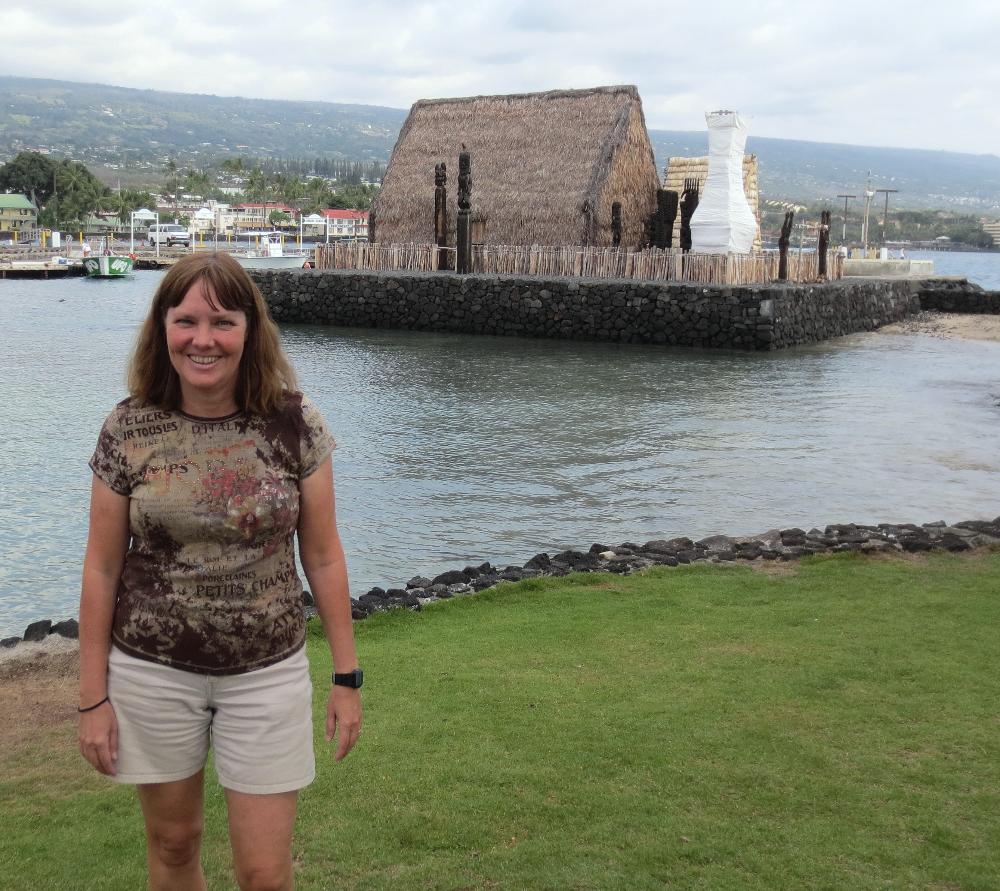
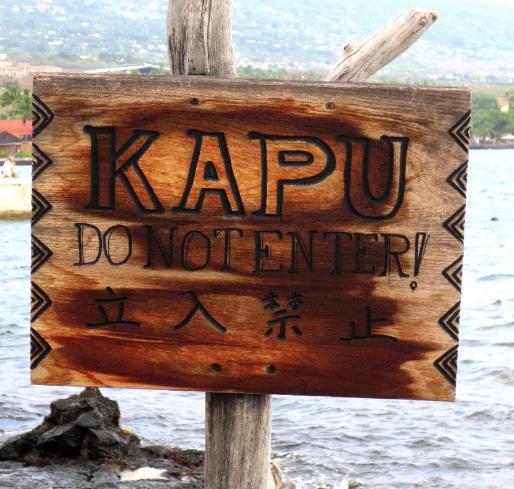
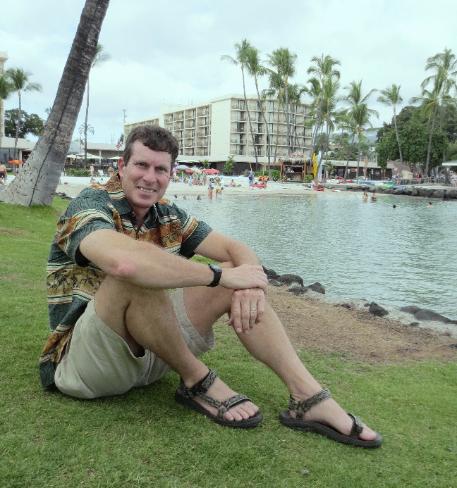
| Despite the fierce look of these wooden statues at Honaunau, this was once a place of refuge. It protected taboo breakers, defeated warriors, and civilians in times of war. |
| The Big Island -- Kona, Hawaii |
| I didn't know you could munch on raw coffee beans. Mountain Thunder's hand-picked organic coffee beans are less bitter than most. |
We went to "coffee boot camp" first thing in the
morning. After picking up our rental car at the
King Kam Hotel (just 200 yards from the pier),
we headed into the hills above Kona to visit
Mountain Thunder Coffee Plantation, whose
coffee beans grow at the highest elevation in
the state of Hawaii. It's also the largest organic
coffee farm in the state. Our guide Judy gave
us a comprehensive tour lasting an hour. She
was a memorable personality in her own right:
she clearly thought it was a sin to have coffee
any other way than black. ("Why cover over the
taste of the coffee?") We learned a LOT about
coffee and will certainly never forget her.
Our other big stop of the day was Pu’uhonua O
Honaunau National Park 30 miles south of Kona.
Let's just call it The Sanctuary for short. This
place quickly captures your imagination with its
ferocious wooden idols and fascinating history.
If you were a Hawaiian and broke one of the
sacred laws (known as kapu, or taboo), death
was the punishment -- unless you could elude
your pursuers, swim through shark-infested
waters, and reach this place of refuge! No harm
could come to any who reached the boundaries
of this place.
morning. After picking up our rental car at the
King Kam Hotel (just 200 yards from the pier),
we headed into the hills above Kona to visit
Mountain Thunder Coffee Plantation, whose
coffee beans grow at the highest elevation in
the state of Hawaii. It's also the largest organic
coffee farm in the state. Our guide Judy gave
us a comprehensive tour lasting an hour. She
was a memorable personality in her own right:
she clearly thought it was a sin to have coffee
any other way than black. ("Why cover over the
taste of the coffee?") We learned a LOT about
coffee and will certainly never forget her.
Our other big stop of the day was Pu’uhonua O
Honaunau National Park 30 miles south of Kona.
Let's just call it The Sanctuary for short. This
place quickly captures your imagination with its
ferocious wooden idols and fascinating history.
If you were a Hawaiian and broke one of the
sacred laws (known as kapu, or taboo), death
was the punishment -- unless you could elude
your pursuers, swim through shark-infested
waters, and reach this place of refuge! No harm
could come to any who reached the boundaries
of this place.
| The only access to the Sanctuary for common folk was to swim across this bay known as the Sharks Den. If you managed that, then the kahuna (priest) was required by law to offer you sanctuary and absolve you of all wrongdoing. |
| The Kings of Hawaii once lived here. The grounds include a thatched palace, a private canoe landing, a fish pond, and several temples. |
| Next to the Sanctuary is Honaunau Bay, offering good snorkeling and paddle surfing |
| Silhouetted palm trees evoke the serenity of beautiful Hawaii |
| Carved statues guard the temples |
| King Kamehameha built Ahuena Heiau temple here (reconstructed above), and used it as a gathering place for his kahuna to counsel him. When his son ate with the queen here, he broke the ancient taboo against eating with women and established a new order in the kingdom. |
| In the background you can see Kona Beach Hotel and the beach |
| At the store we bought some tasty chocolate-covered coffee beans for the road |
| We drove south along a winding mountain road to the artsy town of Holualoa, then paused at the Up-Country Bakery for some banana nut bread French toast |
| Our next stop was the Painted Church, about 20 miles south of Kona. In the late 1800s a Belgian monk painted biblical scenes inside so Hawaiians could get a better sense of the white man's version of creation. |
| The designs are simple but the church has a wholesome feel to it (iand t's on the way to the Sanctuary) |
| We quickly mastered this ancient Hawaiian board game (just kidding, we have no idea how it was played!) |
| Back in Kona we returned the rental car and walked around town, enjoying the beach and this enormous banyan tree |
| Some of the statues look fierce, others bewildered, and others seriously bummed out |
| Our tour at Mountain Thunder Coffee Plantation began with an up-close look at a coffee plant with its ripe red coffee beans (or cherries) |
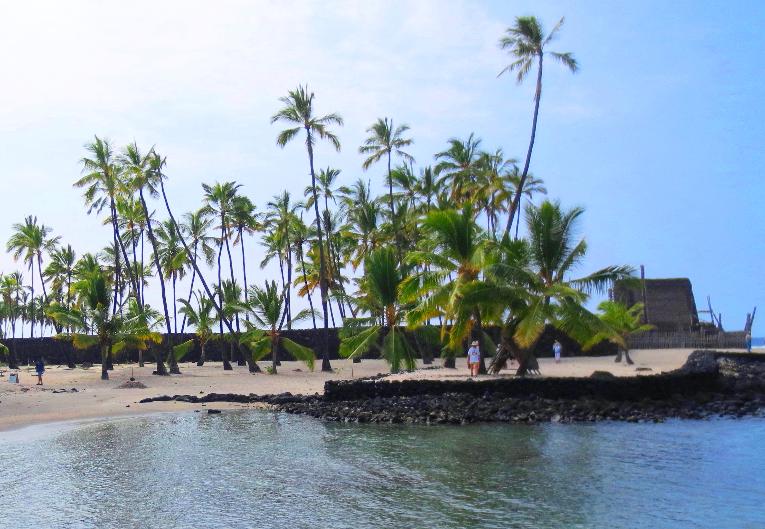
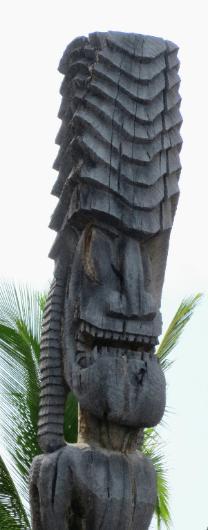
| Our final stop, and one of our favorites of the cruise, was Pu’uhonua O Honaunau, which translates as the Place of Refuge at Honaunau |
| Nearby is the sacred place King Kamehameha called home in 1812 after conquering the Hawaiian Islands. It is kapu (taboo) to walk beyond this sign. |
